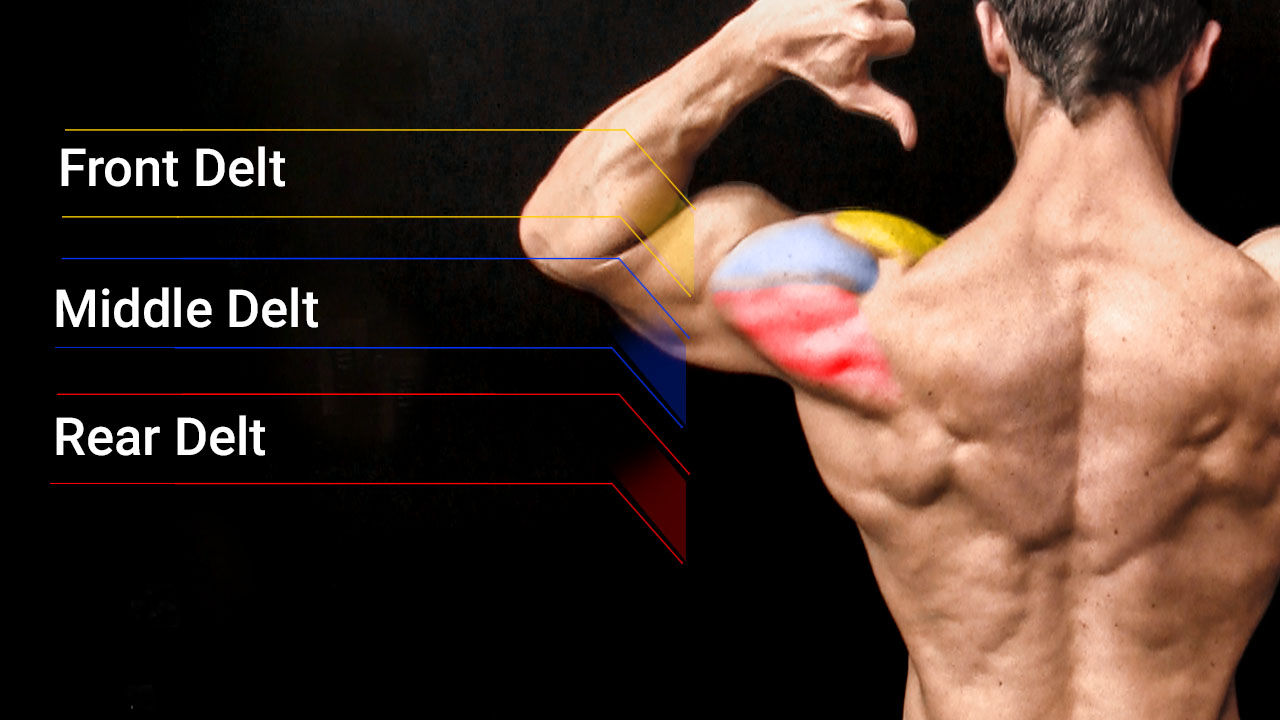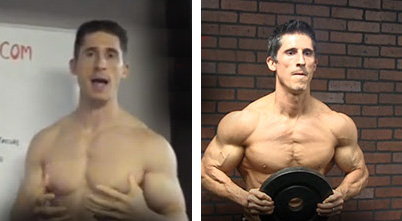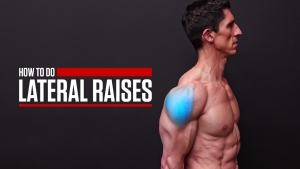
HOW TO GET BIGGER SHOULDERS
You’ve probably heard the saying… “Lift big, get big.” Well, that’s not entirely true.
If you truly want to know how to get bigger boulder shoulders, you have to be willing to leave your ego at the door!
Of course, heavy weights should remain a part of your shoulder workout program, but if you’re excluding the use of light weights in your shoulder workouts, this is likely holding back the size of your delts!
Lighter weights are the real key to getting bigger deltoid muscles much faster, and ultimately to being able to lift more on your heavy compound lifts done with a barbell.
So get ready for the hardest “light” set you’ve ever done!
But I assure you this: if you do what I show you here today you’re going to get bigger wider shoulders.
And when you try this technique you’ll feel the difference instantly!
We covered shoulder muscle anatomy in detail in the Perfect Shoulder Workout, but to give you a reminder of what we’re talking about when it comes to the shoulder muscles, here’s a quick visual guide to the delts: the front delts at the front of your shoulders, the medial deltoids, and the rear delts (or anterior deltoids).
MY SHOULDER TRANSFORMATION
Before I get into the nitty gritty of this shoulder building technique I wanted to show you how I KNOW it works.
It’s because I’ve applied it to my own body and with astounding results!
Lifting lighter is the single biggest change I made in my shoulder training and you can easily see that it’s dramatically increased my shoulder size.
The picture on the left is me at 33.
The picture on the right is me at 40.
Older yes? Much better delts? Absolutely!
So how is it that the lighter pair of dumbbells can make such a big difference?
WHY HEAVY LIFTS AREN’T ENOUGH FOR SHOULDER DEVELOPMENT
Why aren’t heavy compound lifts ideal when it comes to workouts for building bigger shoulders?
Let me explain.
The delts are one of those muscle groups that get a large amount of assistance from other muscles in the upper body during their lifts.
The push press is one of the best shoulder exercises to demonstrate this.
HEAVY LIFT: PUSH PRESS

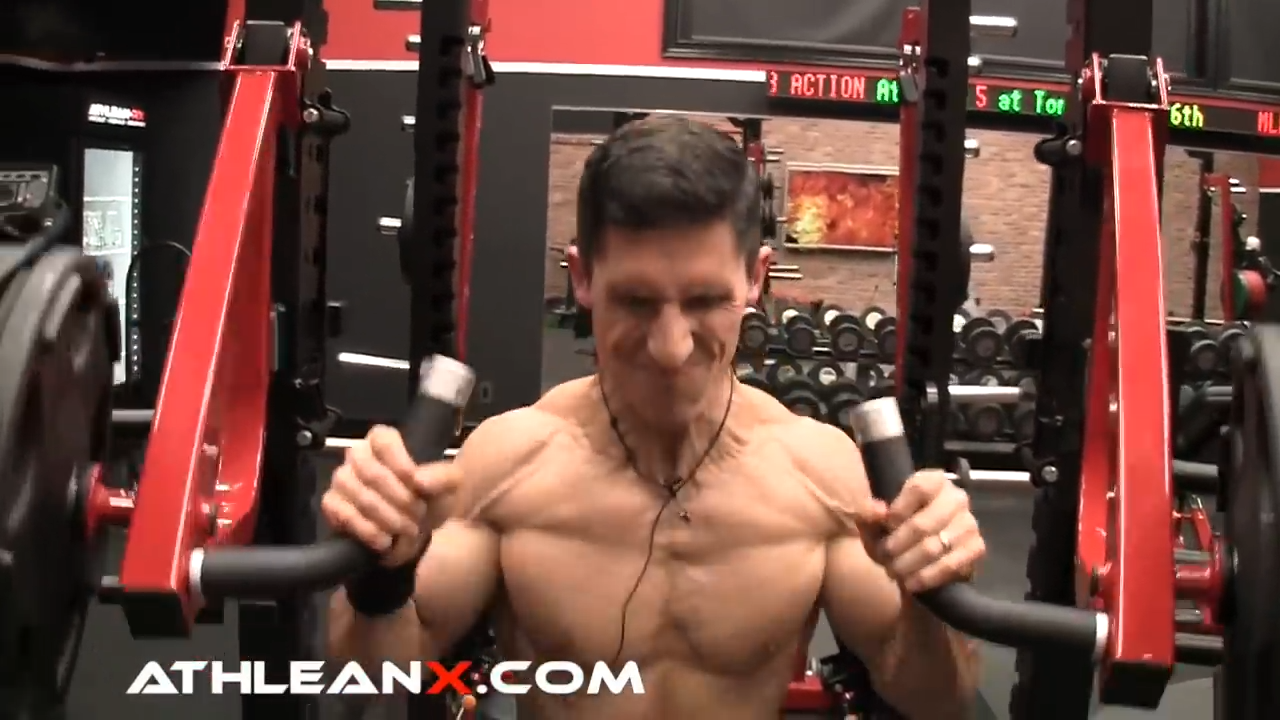
In an effort to move as much weight as possible, you’ll be using a lot more than just your shoulder muscles. Here you are not just working your deltoids but also the upper arm (triceps), chest, core and even legs. You’ll likely use a large amount of momentum to move the weight as well.
While this is an effective way to build bigger and stronger shoulders overall, it tends to not work so well if you want to increase the size and strength of your delts specifically.
Is it possible to increase your strength on this exercise, and therefore build more muscular shoulders over time?
Of course.
But it would require a lot of step by step, small increases in the weight you’re lifting to be able to improve your strength in this exercise.
This is not a fast way to build up your delts!
CHECKING YOUR EGO AT THE DOOR…
If you instead grab a pair of dumbbells and more effectively isolate the shoulders, you can actually build strong shoulders.
Now, I said ‘more effectively isolate the shoulders.’
That doesn’t mean grabbing the heavy weights and doing dumbbell side lateral raises in which you start bringing your traps, arms, back and momentum into it.
These muscle groups want so badly to kick in to assist with the lift, especially during the first few degrees of the movement.
To avoid this, what we want to do is do a zero momentum exercise with much lighter weight so that the deltoids do virtually all of the work.
I’ll show you how to do this with a dumbbbell side lateral raise.
And I’m going to use 15s.
Yes, that’s 15 lbs!
Now, how do we do it?
First, I want to show you what NOT to do.
As I go to raise these dumbbells up, the first move is NOT this. I’m not hinging forward.

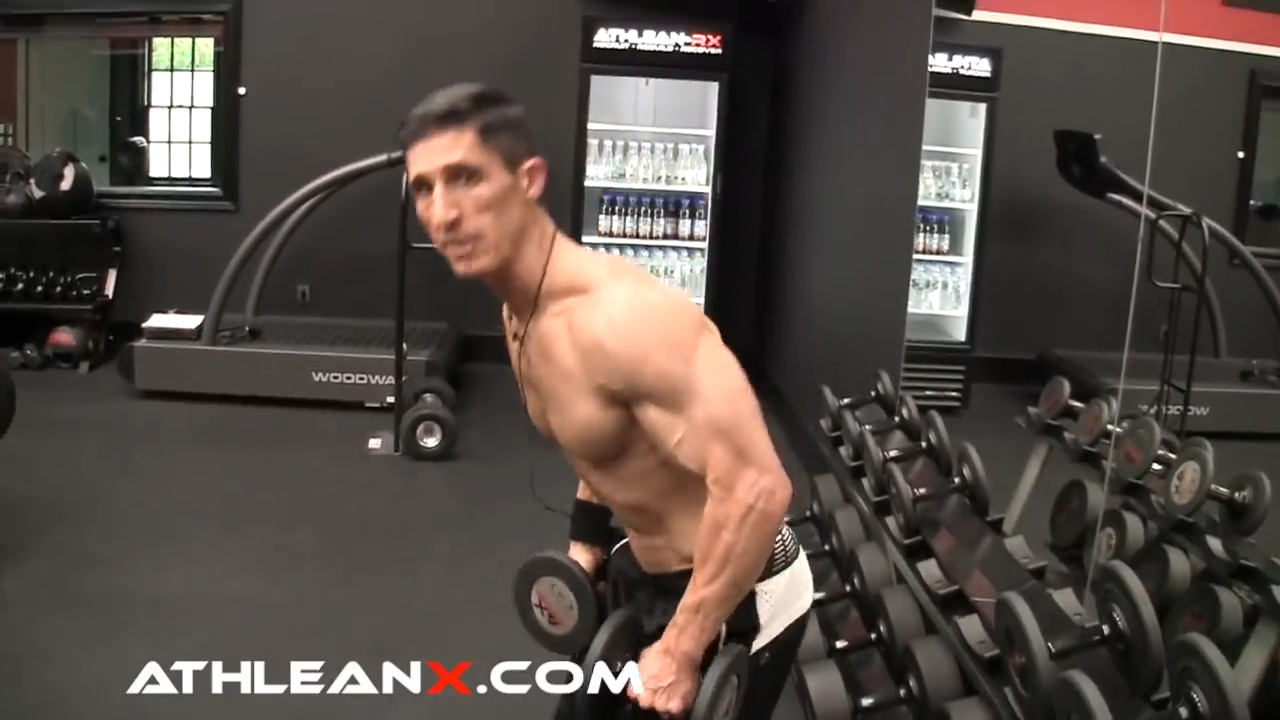
It’s also NOT this, with my arm bending.


Instead, you want to raise your arms keeping them straight with palms facing the floor, and lift them out to the side by initiating the contraction from the deltoids. Finger positioning is important in this exercise. Pinkies should be down and thumbs should be up. This time, lift only half way to shoulder height.

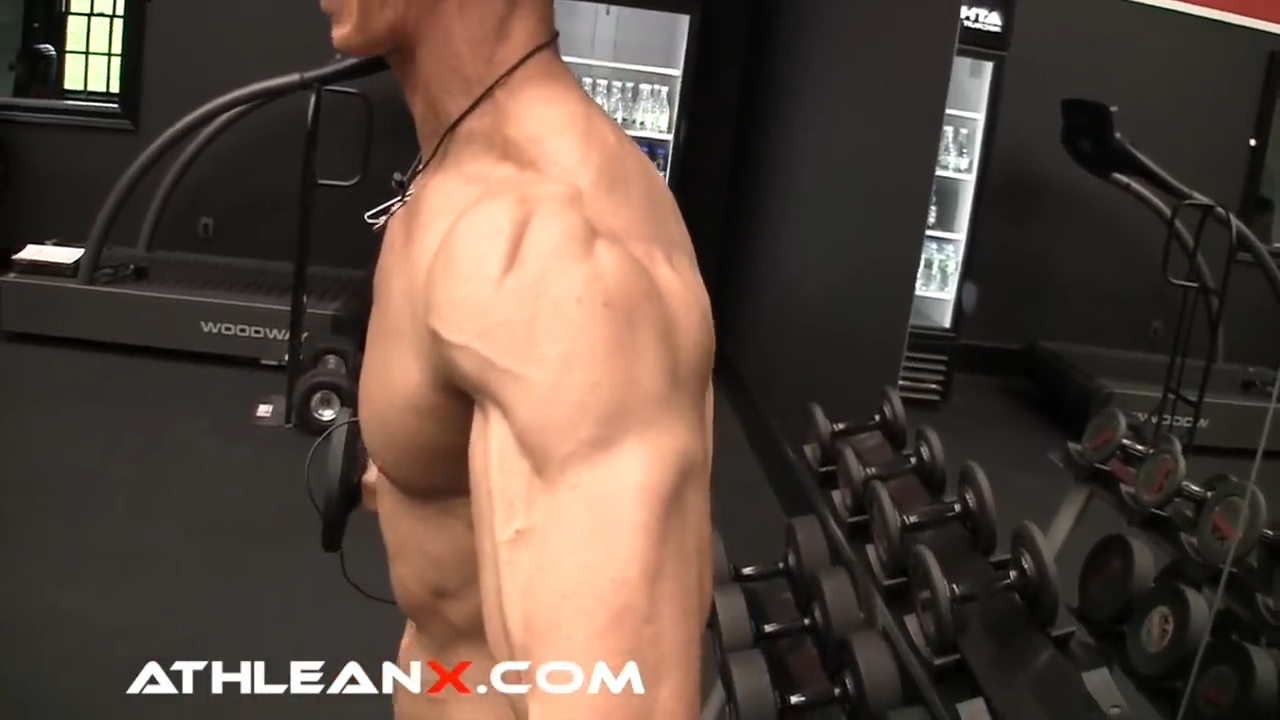
Now, here’s where this exercise gets a lot tougher!
To ensure we have zero momentum, stop halfway through the repetition and pause. This demands that you are in control of the weights and that they are not controlling you!
From here, reinitiate the lift and squeeze the shoulders as hard as you can to get the dumbbell to just past shoulder height with your arm parallel to the ground.

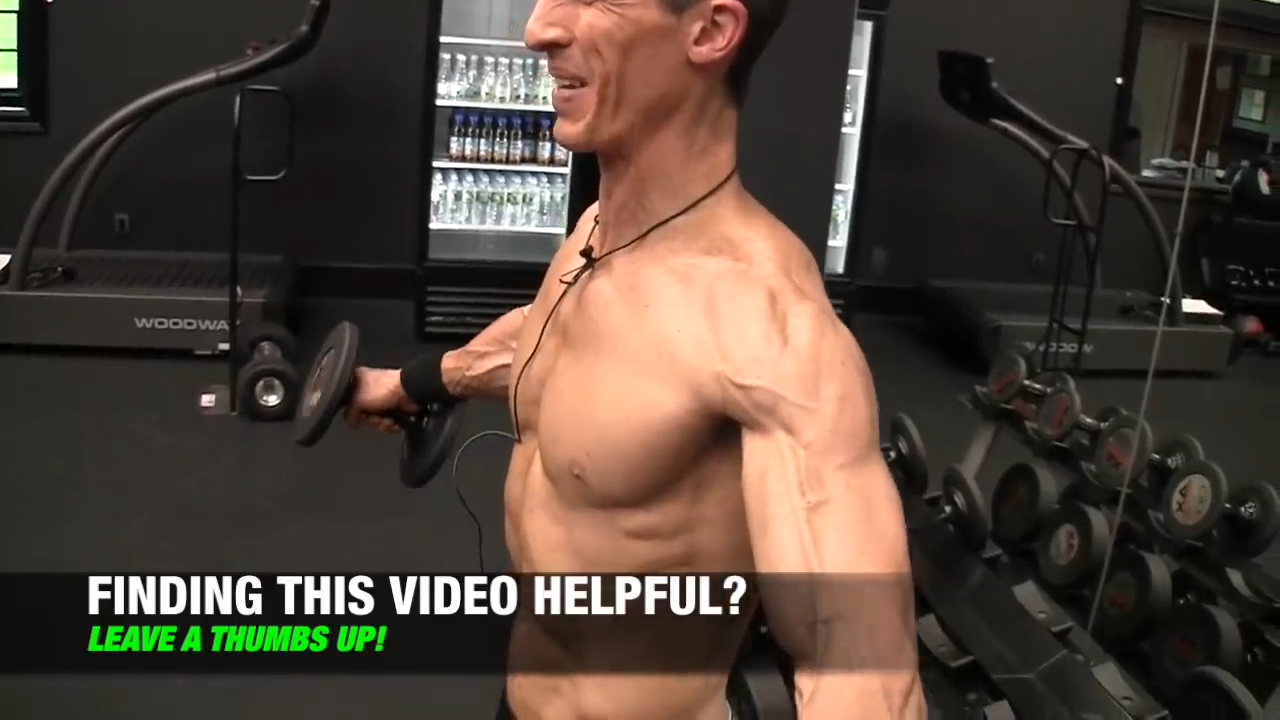
Next, lower the dumbbell half way down and repeat one more contraction to the top.

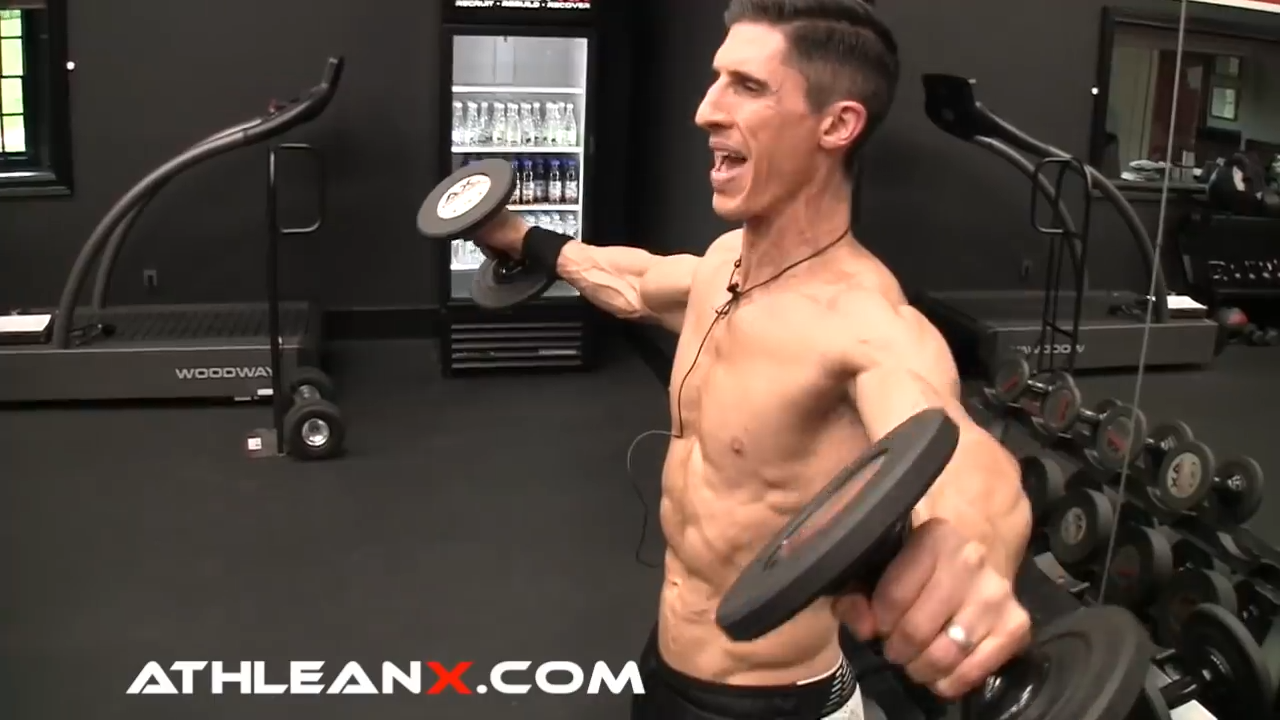
Here is a top view so that you can see the activation of the deltoids from another angle.

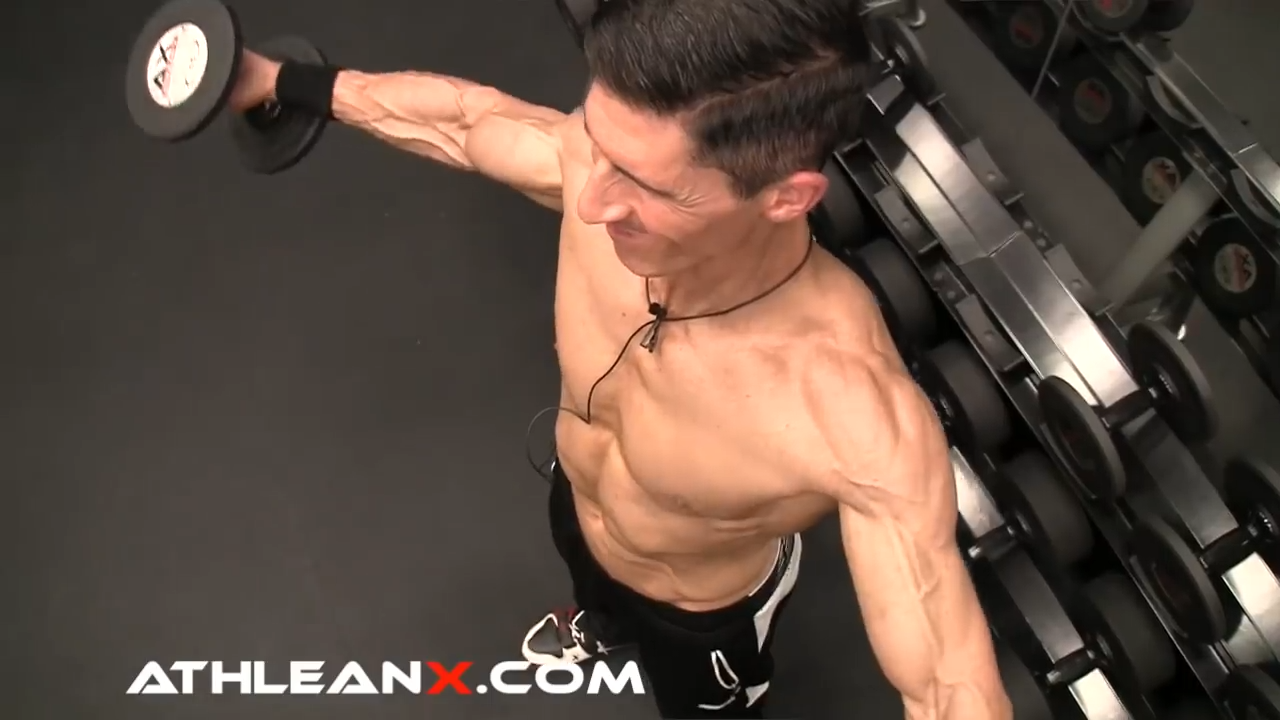
As you can see, this is only 15lbs and I am struggling mightily to perform one rep!
Here’s what one entire ‘rep’ looks like.
LIGHT LIFT: ZERO MOMENTUM SIDE LATERAL RAISE

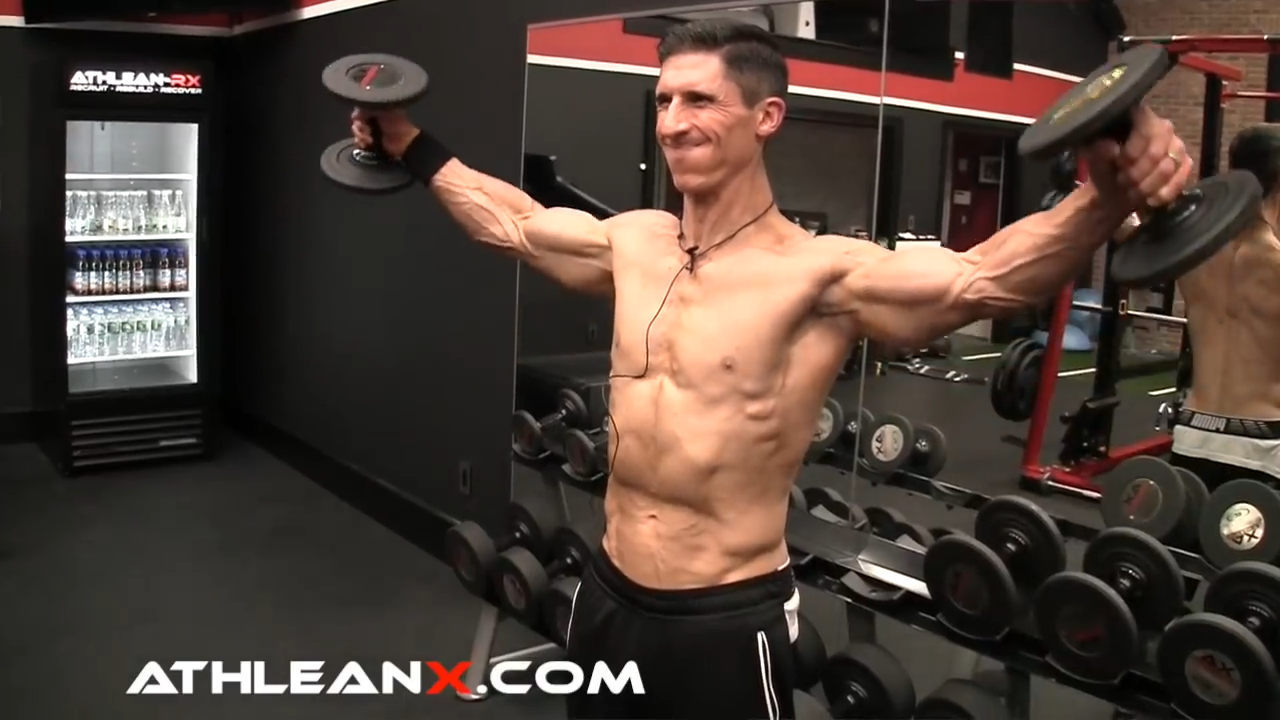
For this variation, take whatever weight you would normally use with a side lateral raise, cut it in half, and see how many reps you can do.
Your shoulders will be on fire and you will instantly see how difficult it can be if you let your delts do the work rather than letting all the other muscles help as they normally would!
You might feel a hell of a lot weaker while you do it, but you’re going to get stronger from it!
BEST TECHNIQUE FOR BUILDING THE DELTS… AND EVERYTHING ELSE!
The muscularity that you can develop from this approach with the side lateral raise is off the charts!
Why?
Because you’re actually directing the tension into the deltoid muscle for probably the first time ever in this exercise.
In the most common version of side lateral raises, you were probably distributing tension among all the other muscles that were helping you. Not to mention, momentum was likely playing a role.
Overall this technique will help you increase the strength of the deltoid by cutting out all those crappy reps you’ve been doing and forcing you to focus more on driving tension into the muscle itself.
Then you can take the increased shoulder strength that you get from using those light weights and you’ll see the difference it makes in your heavier lifts like the push press!
This technique isn’t only for building strong shoulders.
You can use this technique for every other muscle group, too!
You’re going to be able to transfer the individual strength of the contributing muscles to the compound movements when you attempt them again. That’s when you start to see some real gains!
So please, for the benefit of your delts, leave your ego at the door. Focus more on driving tension into the muscle you’re actually trying to grow and the results will be remarkable. Train shoulders using this technique every time and it’s going to make a huge difference on how that muscle looks and more importantly, it’s going to translate into the actual strength you have in your muscles.
If you’re looking for a complete workout program that puts the science back in strength and shows you the most effective workout tips to maximize your gains and get the most out every single workout routine you do, check out our ATHLEAN-X programs.

- The old saying ‘lift big, get big’ doesn’t necessarily apply to every muscle group, and shoulder training is a great example.
- With heavy compound ‘shoulder’ exercises like the push press, you need to use a lot of different muscles to actually move that heavy weight, including triceps, chest, core and even legs and you are probably not working your deltoids as much as you think. Momentum also kicks in, making this an even bigger problem.
- One of the best techniques for building the delts involves checking your ego at the door and picking up some really light dumbbells for a Zero Momentum Side Lateral Raise. This variation isolates the deltoids and makes sure that momentum isn’t playing a role.
- This technique yields huge gains in size and strength of the deltoids which you’ll also be able to feel over time as you continue to attempt your heavier compound lifts.

Jeff Cavaliere M.S.P.T, CSCS
Jeff Cavaliere is a Physical Therapist, Strength Coach and creator of the ATHLEAN-X Training Programs and ATHLEAN-Rx Supplements. He has a Masters in Physical Therapy (MSPT) and has worked as Head Physical Therapist for the New York Mets, as well as training many elite professional athletes in Major League Baseball, NFL, MMA and professional wrestling. His programs produce “next level” achievements in muscle size, strength and performance for professional athletes and anyone looking to build a muscular athletic physique.
















